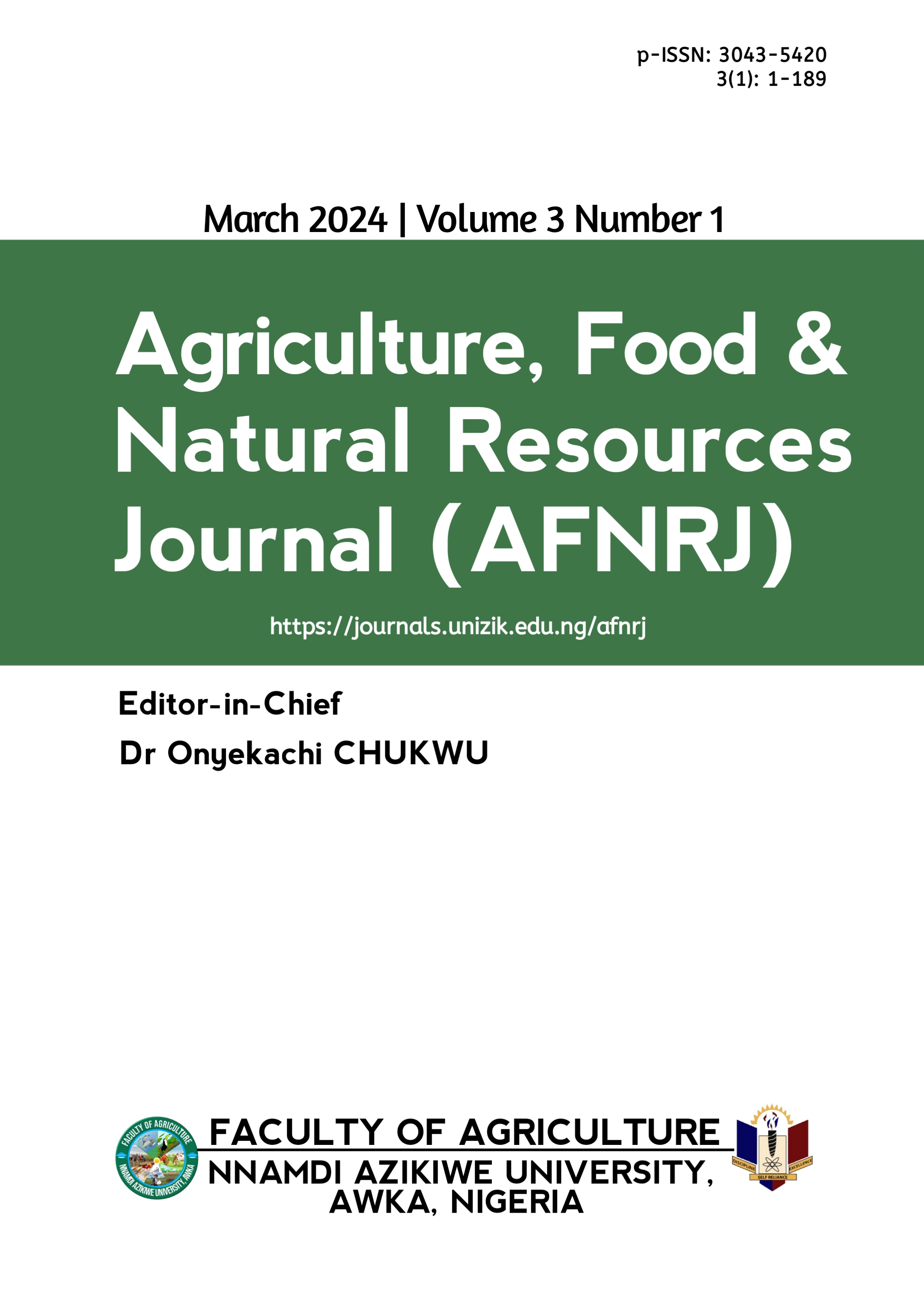Evaluation of wood qualities of Tectona grandis Linn. F. plantation in University of Ibadan, Nigeria
DOI:
https://doi.org/10.5281/zenodo.13766088Keywords:
Axial and Radial Variations, Mechanical Properties, Physical Properties, ShrinkageAbstract
This study examined selected wood qualities of Tectona grandis Linn. F. plantation in the University of Ibadan, Nigeria for sustainable Management. Five even-aged merchantable teak stands with diameter at breast height (DBH) ≥ 50 cm were randomly felled. Wood samples from DBH, base (10%), middle (50%), and top (90%) axial positions and partitioned into radial zones (core, middle, and outer growth rings). The physical properties: Moisture Content (MC), Density(D), Longitudinal Shrinkage (LS), Radial Shrinkage (RS), Tangential Shrinkage (TS), and Volumetric Shrinkage (VS), and mechanical properties: Dimensional Stability (DS), Modulus of Elasticity (MOE), Modulus of Rupture (MOR), and Maximum Compressive Strength (MCS) were determined using standard procedures. Data collected were subjected to descriptive, analysis of variance and correlation analyses. Significant means were separated using Least significant difference. The results revealed that MC, D, LS, RS, TS and VS had pooled means (axial and radial variations) of 12.18%, 636.08kg/m3, 2.22%, 3.98%, 3.84%, and 7.81% respectively. Wood density and shrinkage coefficients varied slightly across the axial and radial positions of the stands. The DS, MOE, MOR and MCS (parallel to the grain) had pooled means of 1.85, 985.46N/mm2, 43.30N/mm2, and 49.20 N/mm2, respectively. Significance (p<0.05) were recorded across all the radial axis. A positive and significant correlation was observed between MOE and MOR. The study concludes that the plantation had more dense wood which contributes to stronger and more durable wood, making it suitable for various structural applications. Hence, regular silvicultural management practices are recommended to maintain the wood stiffness, strength and dimensional stability.
Downloads
Published
Issue
Section
License
Copyright (c) 2024 Authors

This work is licensed under a Creative Commons Attribution 4.0 International License.
which permits unrestricted use, distribution, and reproduction in any medium, provided the original author and source are credited.
Authors retain the copyright of their published work in the AFNRJ.





